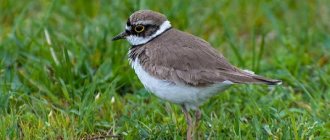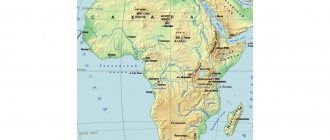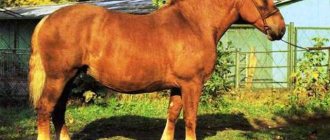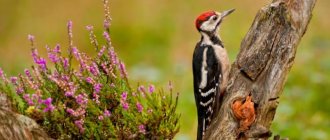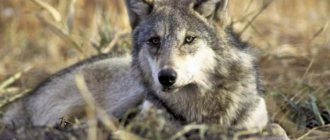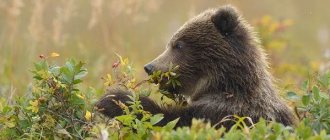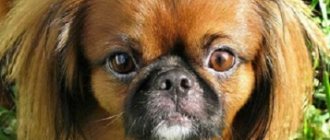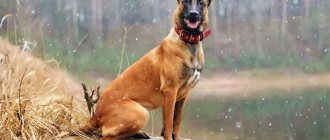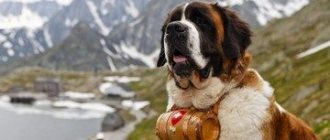Always hot and humid, equatorial forests are a habitat for unique plant and animal organisms. They are located in certain areas of the equatorial region of Africa, the Amazonian lowland, the Indonesian archipelago, and the south of the Malay Peninsula. Due to climatic features and pronounced tiering, ideal conditions are created for the existence of various representatives of flora and fauna.
According to the school curriculum, this topic is studied in the 7th grade. The article provides a detailed description of the climatic and natural conditions of the equatorial forest.
What are equatorial rainforests
The equatorial rainforest is a natural area consisting of closely growing trees and shrubs.
Has the property of self-renewal. Trees play a major role in humid equatorial forests. Secondary roles in humid equatorial forests are played by herbaceous plants with shrubs, mosses and lichens. Forest areas are forest areas that have designated boundaries. Humid equatorial forests, like all other forests, are characterized by layering - vertical division into tiers. The upper layer consists of trees, followed by a layer of shrubs called undergrowth. The next, lower tier, is represented by grass and the lower tier of mosses and lichens. The lower tiers are more unpretentious and require less sunlight than the upper tiers. The different tiers are closely dependent on each other. The denser the upper tiers grow, the rarer the lower tiers become.
Equatorial rainforests are a natural area that runs along the equator with a slight deviation to the south. The climate here is hot and humid. Year-round temperatures range from +25 to +28 degrees. There is no clear expression of the seasons. Low pressure prevails, and therefore there is an abundance of precipitation that falls all year round. This climate contributes to the lush growth of evergreen flora.
The moist equatorial forest has a complex multi-tiered structure. The branching of trees is weakly expressed. The tree has a disc-shaped root, a columnar trunk and a spreading crown at the top of the trunk with large leathery foliage. The leathery leaf structure helps the leaves cope with intense evaporation and scorching heat, as well as with the strongest impacts of storm flows. Tender and thin plants grow on the lower tiers. Equatorial forests have become home to many of the most valuable representatives of the world of flora. For example, such as oil palm. Elite furniture is made from ebony wood. Equatorial forests predominate in South America and Africa. They are also found on the Eurasian islands.
Jaguar
The world's third largest carnivorous mammal and one of the largest representatives of the cat family, living in North and South America. Goes hunting at dusk. Its prey includes ungulates, birds, monkeys, and turtles. The jaws of a jaguar can easily bite through the shell. Swims excellently and in rare cases is capable of missing prey; sometimes it can attack sleeping alligators.
The importance of equatorial rainforests
The importance of equatorial forests is priceless. These are the “lungs” of the globe, absorbing carbon dioxide and releasing oxygen masses, thanks to which all living things exist. Thanks to equatorial forests, climate normalization occurs. The forest zone is home to a variety of flora and fauna.
Equatorial rain forests can influence the distribution of precipitation around the world, regulate water balance, and serve as protection against flooding, drought and erosion. Many medicinal herbs grow in the forests, serving as raw materials for the manufacture of medicines. Many forest gifts serve as food for humans. The forest area is a great place for tourism and recreation in the lap of nature.
Uninvited guests
Brown recluse spiders live mainly in forests, but often enter people's houses, where they build their nests in secluded corners. The venom of brown spiders is very dangerous. At the moment of the bite, a person does not feel pain, since the spider’s stinging apparatus is very small, and the venom has a very slow effect. Only after an hour can you feel a slight tingling or burning sensation at the site of the bite. After 5-7 hours, the area begins to swell and a blister forms. After 2-3 days, the blister bursts, and a non-healing ulcer takes its place. In such cases, you should urgently call a doctor.
Climate of moist equatorial forests
Equatorial forests are characterized by high humidity, which is at least 85 percent. They maintain temperature stability. Precipitation is intense. The average daily temperature is approaching thirty degrees. At night, the temperature drops to +20 degrees and below. This natural area has 2 seasons: the dry season and the rainy season. The dry season lasts 3 months. It starts in July and ends in September.
The rest of the time is allocated to the rainy season. During the year, in the equatorial forest zone, precipitation falls from 300 to 500 cm. There is no windy weather in the forests; silence reigns here all the time. This climate promotes the vigorous growth of plants, which, growing, form dense thickets. Due to this, rain forests are difficult to navigate and are still not sufficiently studied and explored by scientists. Equatorial forests occupy the intertropical zone. It has low atmospheric pressure and weak winds of variable direction. Every day, you can observe a repeating climate pattern: hot humid air, morning fog, heavy evening rains.
Lianas
These are climbing plants that can be either woody, with evergreen or deciduous leaves, or herbaceous, with relatively weak, thin stems. Lianas are not able to stay in the air on their own, so they find support among trees and cling to them with the help of tendrils and adventitious roots. Thanks to these adaptations, they rise upward, where they develop their foliage and flowers.
Plants of moist equatorial forests
The life pattern of equatorial forests is vertical. The flora is located on several levels. In total, there are 4 floors in the forests. The process of photosynthesis occurs throughout the year. The plant world of the forest is represented by tall evergreen deciduous trees, reaching eighty meters in height with wide roots. In addition, woody vines grow here in abundance.
They are able to twine around any trees, hang on branches, walk and crawl, tangling in balls. Some vines are equipped with thin and smooth roots. Other vines are distinguished by their rough, gnarled roots. Often many vines are closely woven together, forming something like ropes. Woody vines have the property of continuous growth in length, and they are also long-lived in forests.
Strong ropes and ropes are made from vines. The forests contain a variety of palm species. Herbaceous plants, lichens, mushrooms and reeds grow on the middle and lower tiers. The lands near the coasts are swampy and covered with mangrove forests. The main representatives of the world of flora in equatorial forests are the following representatives:
- Hevea. Contain rubber, which serves as a source of rubber;
- Cocoa;
– Bananas;
- A coffee tree;
– Oil palm. Is a source of palm oils;
- Ceibas. They contain oils used in soap making, as well as cotton.
Glass frog
The glass frog has nothing to hide
In appearance, it is no different from any other ordinary frog. However, it still has a significant distinctive feature. The skin on its abdomen resembles transparent glass, through which you can see all the internal organs of the frog - the liver, heart, gastrointestinal tract, and sometimes even eggs in females.
Animals of the equatorial rain forests
Animals of equatorial forests, as well as plants, live on several tiers. The lower tier is home to many insects, small rodents, small ungulates, various reptiles and wild cats. Large elephants and leopards live in African rain forests, South American forests are inhabited by jaguars, Indian forests are favored by elephants, smaller than their African counterparts.
Forest ponds are teeming with crocodiles, hippos and many water snakes, the largest of which is the anaconda. The forest zone is home to many representatives of the bird family. Among them we can distinguish such representatives as: sunbird, toucans, hummingbirds. The most famous inhabitant of the rainforest is the parrot. Many species of this bird live in the forest zone. All feathered representatives of humid forests are characterized by bright, exotic plumage colors. The most beautiful is the bird of paradise, which has a multi-colored tail and crest, more than 50 cm long.
Neighboring the birds are the sloth and numerous monkeys: monkeys, orangutans and other primates. They live in the crowns of trees, where they can easily get food: nuts, berries and fruits. On this tier, primates are reliably protected from attacks by predatory animals and gusts of wind. Larger apes, such as gorilla and chimpanzee, live on the lower tier. They eat fruits falling from trees, fresh shoots and plant roots.
Helmeted Basilisk
This arboreal lizard prefers to stay in thickets along river banks. The basilisk has a crest starting on its head and ending on its tail. The reptile is an excellent swimmer and can remain underwater for half an hour. However, the most amazing thing is that this lizard is capable of running 400 meters on the surface of the water at a speed of 10 kilometers per hour. This is possible due to the fact that there is hanging skin on the basilisk’s paws, which creates a kind of air sac.
Soils of moist equatorial forests
The soil covers of humid forests are enriched in aluminum and iron and have a red-yellow color. Although the forest zone is home to many representatives of the kingdom of Flora, the soil cover in it is poor and not fertile. Due to the climatic heat, bacteria contribute to the accelerated decomposition of plants. This serves as a serious obstacle to the formation of humus and soil fertility.
The abundance of high precipitation provokes soil leaching. That is, water washes soluble salts and various minerals from the soil, in particular calcium and magnesium. Over many centuries, weathering processes and heavy rainfall have led to the impoverishment of soil covers, which have lost useful nutrients. In recent years, deforestation has had a detrimental effect on soil covers, leading to accelerated leaching of nutrients from the soil.
A coffee tree
Coffee is made from red and green seeds of the coffee tree.
The coffee tree is a genus of evergreen plants that are common in tropical Africa. Most species are small trees or large shrubs up to 8 meters high. All parts of these plants contain caffeine. It serves to repel various pests. Many types of coffee trees are grown by humans to produce seeds, from which, through roasting and brewing, a beloved drink, coffee, is obtained by many.
Angel trumpets that zombify people
In the South American jungle there is a plant called Brugmansia arborescens or angel's trumpets. It is a small bush that can turn a person into a zombie! The cute flowers of this plant have a hypnotic effect on people. That is, a person affected by Brugmansia poison remains conscious, but does not control his actions, so he can be controlled like a robot.
American equatorial rainforests
The forests of the humid equatorial zone in South America are called selvas. In Portuguese it means "forest". Compared to African forests, the selva has a high degree of humidity. There is a rich flora and fauna here. Ferrallitic soil cover is red-yellow in color. In total, 40 thousand representatives of the world of flora grow in the forests, forming more than 10 levels of habitat. Lianas predominate, creeping along the ground and entwining many trees.
Wide variety of orchids. Some trees reach gigantic sizes, exceeding a hundred meters in height. Selva is rich in valuable trees. Here you can find Hevea, which serves as raw material for rubber production. Cinchona trees serve as medicinal raw materials. Chocolate is made from cocoa fruits. You can also find fruit trees in South American forests: papaya with pineapple and banana. Unusual trees also grow here: a light waltz tree and a heavy iron tree.
The selva is favored by a variety of insects and spiders. Here they reach gigantic sizes. Trees serve as a home for small monkeys. There are no great ape species. Many reptiles live here. You can meet the longest snake in the world, which is called the anaconda. Birds are also abundant here. Variety of species of parrots and hummingbirds. Forest swamps are infested with crocodiles and piranhas.
Euterpe
Euterpe with unripe fruits
This is a tropical palm that grows in the Amazon jungle. It is a tree with a thin, smooth trunk that can reach a height of more than 30 meters. The fruits of euterpa are black juicy berries, reminiscent of blueberries, with a pleasant sweet taste. South Americans add them to cocktails and ice cream. Most often, euterpes are found in Brazil.
African equatorial rainforests
Almost 10 percent of the entire continental area of Africa is occupied by Hylaea. This is the African humid forest zone. It is located along the southern coast of the Gulf of Guinea, near the equator. The flora is very diverse. Almost 4 thousand species of trees grow in the Hylaia.
The upper level is occupied by tall trees: ficus and various palm trees. The lower level is represented by oil palms, bananas, ferns and vines. Shrubs are rare. In African forests, valuable ebony and mahogany wood is mined, which serves as raw material for making furniture. The soil covers are red or yellow in color.
They contain a high content of aluminum and iron. African forests are the kingdom of monkeys. It is home to a wide variety of arboreal primates: marmoset, mandrill, baboon and many other species. There are also a couple of species of great apes present in the forests: chimpanzees and gorilla. Forest antelope and wild boar also live here. Predatory animals include wild cats and leopards.
Rivers are home to crocodiles. Of the birds, parrots and African peacocks predominate. African forests are teeming with insects. Lots of butterflies, bees with termites and tsetse flies. The seasons in African forests are almost the same. The average temperature is +25 degrees. It rains every day, the annual precipitation norm is 2000 mm. The weather is characterized by increased heat and humidity.
Clouded leopard
This predator lives in Southeast Asia. The clouded leopard is not large. The length of its body rarely exceeds 1 meter, and its weight is approximately 20 kilograms. But he is very clever. This predator leads a predominantly arboreal lifestyle. The structure of its paws and claws allows it to grasp a tree trunk or branch in much the same way as a squirrel does. The clouded leopard most often catches deer, wild boar, birds, monkeys and rodents.
Equatorial rainforests of Eurasia
The Malacca Peninsula, the Greater Sunda Islands, the island of Sumatra and southern Sri Lanka lie in the equatorial forest or ghil zone. This zone is smaller in size than the South American one, but much larger than the African forest zone. The Asian hylaea of Eurasia are characterized by multi-tiered structures. Ferralite soil covers are red-yellow in color. The flora of Eurasian rain forests is richer than in the equatorial forests of Africa and America.
Evergreen plants grow here, among which the coconut palm, bamboo in its diversity of species, cinnamon tree, and nutmeg predominate. Huge species diversity of orchids. Among the representatives of the animal world, small primates live in the Hylaea: macaques and gibbons, predatory leopards and panthers, large snakes, in particular, the king cobra. Due to regular deforestation, the modern gili zone has decreased enormously in size.
Bananas grow on the grass!
The banana tree is a large tropical plant similar to a palm tree. Its fruits, bananas, are enjoyed by adults and children all over the world. They grow in whole bunches. Bananas are cut when they are still green, and the fruits ripen in specially equipped warm rooms. The plant itself is only called a tree. In fact, it is a giant grass. The trunk of a banana tree is underground, and its above-ground part consists of layers of leaves.
Ecological problems of moist equatorial forests
Equatorial forest zones face a number of environmental problems. They are being developed for economic purposes at a rapid pace. Their biocenosis is disrupted, many valuable species of animals and plants are destroyed. It is especially dangerous if key species are destroyed. These are specific species of plants and animals, the existence of which affects the life activity of other species.
For example, the bumblebee is the only pollinator of certain plant species. The extermination of bumblebees can lead to the complete disappearance of a number of plants. Hyleas cannot be replaced by forest plantations. This is a natural community with a highly organized life. Massive deforestation has a detrimental effect on flora and fauna. Soils lose useful minerals and substances due to their leaching by rainfall. There is a change in the microclimate, biogeocenosis, and hydrological conditions.
The only possible and correct way out of this situation is to assign the status of nature reserves to most forest zones. Unfortunately, this often contradicts the economic development of the states that own these forest areas.
Interesting Facts
Rain forests are a true miracle on Earth. Many of the plants and animals that live here are endemic, meaning they are not found anywhere else.
Below are just a few of the unique features of the hylea:
- the tropical forest appeared more than 150 million years ago and has undergone minor changes since then;
- Once upon a time, the largest snake in the world lived in the Amazon jungle: it was called Titanoboa, its length could exceed 14 m and it weighed more than a ton;
- The climate during the day is remarkably stable: every day begins with a clear morning, clouds gather in the afternoon, rain falls in the evening, then a cloudless starry night sets in;
- the roots of tropical trees reach a length of no more than half a meter due to the thin soil;
- the largest flower on the planet is Rafflesia Arnoldi, growing deep in the jungle;
- the thickness of the forest canopy can reach 6 m;
- each tree of average height can release up to 750 liters of water per year into the atmosphere;
- The Amazon River contains 20% of all fresh water.
Currently, only a small part of these amazing forests has been studied. Huge humidity, intense heat and impenetrable thickets make this natural area one of the most inaccessible. Therefore, it is assumed that plants and animals completely unknown to science grow and live in the depths of the jungle.
